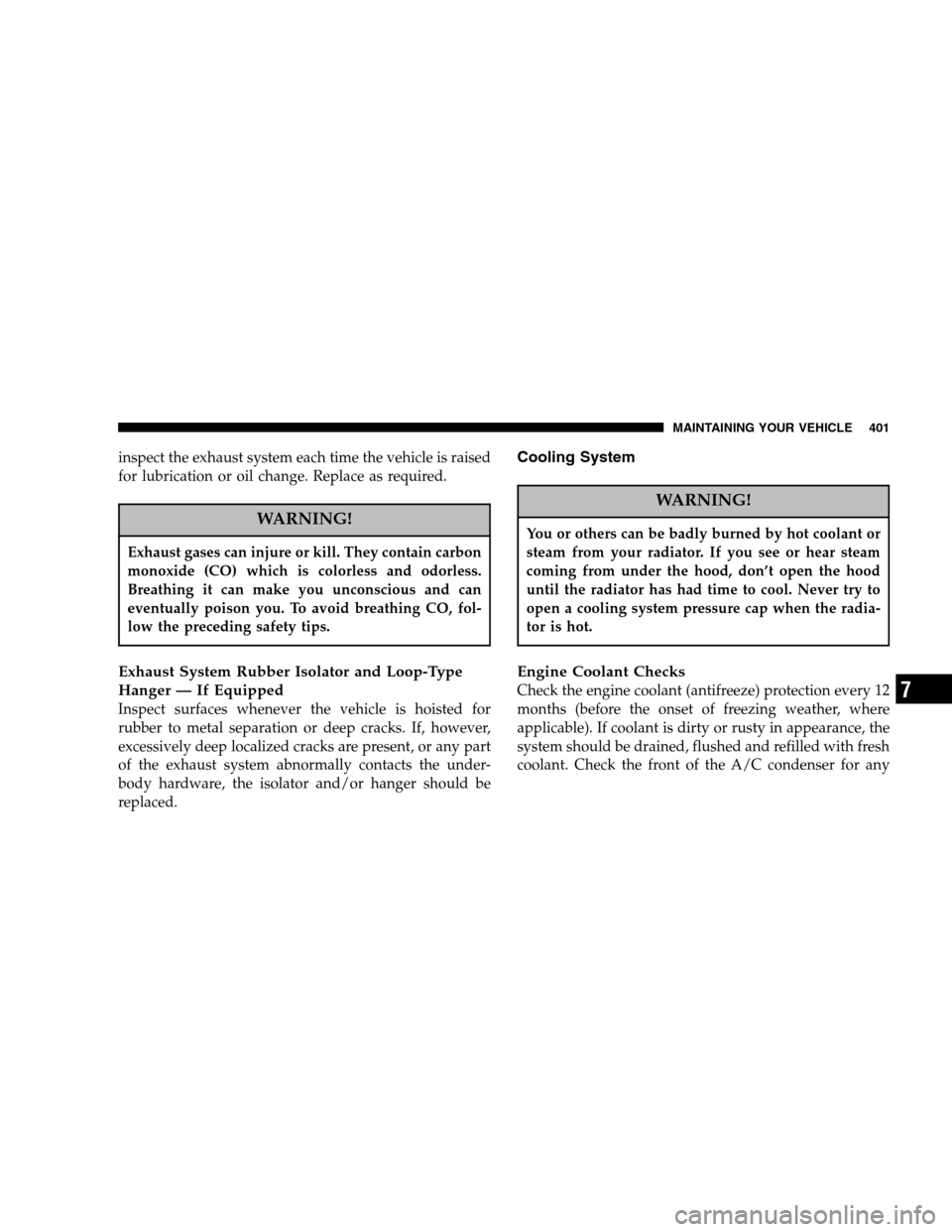Page 78 of 496

▫Reclining Seats .......................111
▫ Adjustable Head Restraints ..............111
▫ Manual Rotary Lumbar Support Adjustment —
If Equipped .........................112
▫ Power Seats — If Equipped ..............113
▫ Rear Seat Features — Mega Cab Models .....114
▫ Heated Seats — If Equipped .............119
� To Open And Close The Hood .............121
� Lights ...............................122
▫ Interior Lights .......................123
▫ Battery Saver ........................124
▫ Headlamp Delay ......................124
▫ Headlights, Parking Lights, Panel Lights .....124 ▫
Daytime Running Lights (Canada Only And
Fleet Vehicles) ........................125
▫ Lights-On Reminder ...................126
▫ Fog Lights — If Equipped ...............126
▫ Cargo Light — If Equipped ..............126
▫ Multifunction Control Lever ..............127
� Windshield Wipers And Washers ............129
▫ Windshield Wipers ....................129
▫ Windshield Washers ...................130
� Tilt Steering Column ....................130
� Driver Adjustable Pedals — If Equipped ......132
▫ Adjustment .........................132
78 UNDERSTANDING THE FEATURES OF YOUR VEHICLE
Page 121 of 496
TO OPEN AND CLOSE THE HOOD
To open the hood, two latches must be released. First pull
the hood release lever located below the steering wheel at
the base of the instrument panel. Once the hood is released you must reach into the opening beneath the
center of the grille and push up the latch to release the
safety catch before raising the hood.
To prevent possible damage, do not slam the hood to
close it. Use a firm downward push at the front center of
the hood to ensure that both latches engage.
Hood Release Lever
Secondary Latch
UNDERSTANDING THE FEATURES OF YOUR VEHICLE 121
3
Page 143 of 496

NOTE:The default for the compass variance is zone 8.
To set the variance: Turn the ignition ON and set the
display to “Compass/Temperature.” Press and hold the
RESET button approximately five seconds. The last vari-
ance zone number will be displayed. Press the STEP
button to select the new variance zone and press the
RESET button to resume normal operation.
Outside Temperature
Because the ambient temperature sensor is located un-
derhood, engine temperature can influence the displayed
temperature, therefore, temperature readings are slowly
updated when the vehicle speed is below 20 mph (30
km/h) or during stop and go driving.
GARAGE DOOR OPENER — IF EQUIPPED
The HomeLink �Universal Transceiver replaces up to
three remote controls (hand held transmitters) that operate
devices such as garage door openers, motorized gates, or
home lighting. It triggers these devices at the push of a
button. The Universal Transceiver operates off your vehi-
cle’s battery and charging system; no batteries are needed.
HomeLink �Programming Buttons
UNDERSTANDING THE FEATURES OF YOUR VEHICLE 143
3
Page 187 of 496

30. Low Fuel Warning Light Glows when the pointer is between “E” and 1/8
indication mark (approximately 15% of tank vol-
ume) on the fuel gauge. When the fuel gauge
pointer is on “E” (equivalent to Distance To Empty [DTE]
= 0 on the overhead console if so equipped) there is
reserve fuel capacity, which corresponds to approxi-
mately 8% of tank volume. This reserve capacity was put
in place to prevent the likelihood of customers running
out of fuel when operating at maximum load conditions
in areas where there aren’t many gas stations. (See page
139 for more information.)
Ram fuel tank volumes are as follows:
•34 gallons - 2500/3500 short box models
•35 gallons - 2500/3500 long box models 31. Door Ajar
The Door Ajar light will illuminate when any
door is opened. When the ignition is ON the
Door Ajar light will stay illuminated until the
open door is closed. When the ignition is OFF
the Door Ajar light will stay illuminated until the open
door is closed or the battery saver feature automatically
turns the light off.
32. CRUISE Light
This indicator lights when the electronic speed control
system is turned on.
ELECTRONIC DIGITAL CLOCK
The clock and radio each use the display panel built into
the radio. A digital readout shows the frequency and/or
time in hours and minutes (depending on your radio
model) whenever the ignition switch is in the “ON” or
“ACC” position.
UNDERSTANDING YOUR INSTRUMENT PANEL 187
4
Page 401 of 496

inspect the exhaust system each time the vehicle is raised
for lubrication or oil change. Replace as required.
WARNING!
Exhaust gases can injure or kill. They contain carbon
monoxide (CO) which is colorless and odorless.
Breathing it can make you unconscious and can
eventually poison you. To avoid breathing CO, fol-
low the preceding safety tips.
Exhaust System Rubber Isolator and Loop-Type
Hanger — If Equipped
Inspect surfaces whenever the vehicle is hoisted for
rubber to metal separation or deep cracks. If, however,
excessively deep localized cracks are present, or any part
of the exhaust system abnormally contacts the under-
body hardware, the isolator and/or hanger should be
replaced.
Cooling System
WARNING!
You or others can be badly burned by hot coolant or
steam from your radiator. If you see or hear steam
coming from under the hood, don’t open the hood
until the radiator has had time to cool. Never try to
open a cooling system pressure cap when the radia-
tor is hot.
Engine Coolant Checks
Check the engine coolant (antifreeze) protection every 12
months (before the onset of freezing weather, where
applicable). If coolant is dirty or rusty in appearance, the
system should be drained, flushed and refilled with fresh
coolant. Check the front of the A/C condenser for any
MAINTAINING YOUR VEHICLE 401
7
Page 402 of 496

accumulation of bugs, leaves, etc. If dirty, clean by gently
spraying water from a garden hose vertically down the
face of the condenser.
Check the coolant recovery bottle tubing for brittle rub-
ber, cracking, tears, cuts and tightness of the connection
at the bottle and radiator. Inspect the entire system for
leaks.
Extremely cold ambient temperature may require the
addition of a “winter front” for effective operation of the
cab heating/cooling system. Make certain that a percent-
age of the radiator is exposed for adequate air flow
through the charge air cooler and automatic transmission
oil cooler. The percentage of opening must be increased
with the increasing ambient air temperature and/or
engine load. If the cooling fan can be heard cycling
frequently, increase the size of the opening in the winter
front.Coolant bottle level check
The coolant reserve system provides a quick visual
method of determining that the coolant level is adequate.
With the engine idling, and warmed to the normal
operating temperature, the level of the coolant on the
coolant bottle should be between the fluid level marks.
Check the coolant level whenever the hood is raised.
The radiator normally remains completely full, so there is
no longer a need to remove the coolant pressure cap
except for checking coolant freeze point or replacement
with new antifreeze coolant.
402 MAINTAINING YOUR VEHICLE
Page 433 of 496
BULB REPLACEMENT
Headlight (Halogen)/Front Park and Turn Lights
CAUTION!
This is a halogen bulb. Avoid touching the glass
with your fingers. Reduced bulb life will result.
1. Open the hood
2. Remove the two (2) bolts from the front of the head-
light housing.
Front Headlight Housing Bolts
MAINTAINING YOUR VEHICLE 433
7
Page 484 of 496

Passing............................. 128
Switch .............................. 124
Heated Mirrors ....................... 85,164
Heated Seats ........................... 119
Heater ............................... 237
High Beam/Low Beam Select (Dimmer) Switch . . 128
Hitches Trailer Towing ........................ 331
Hoisting .............................. 366
HomeLink �(Garage Door Opener) Transmitter . . . 143
Hood Release .......................... 121
Hoses ............................. 408,411
Hub Caps ............................. 362
Hydraulic Clutch Fluid .................... 411
Ignition ............................... 12
Key ................................. 12
Ignition Key Removal ..................... 12
Illuminated Entry ........................ 19 Infant Restraint
........................ 57,58
Inflation Pressure Tires .................... 313
Inside Rearview Mirror .................... 82
Instrument Cluster .................... 178,179
Instrument Panel and Controls .............. 177
Instrument Panel Lens Cleaning ............. 425
Integrated Power Module (Fuses) ............ 426
Interior Appearance Care .................. 424
Interior Lights .......................... 123
Intermittent Wipers (Delay Wipers) ........... 129
Introduction ............................. 4
Jack Location ........................... 355
Jack Operation .......................... 357
Jump Starting .......................... 367
Key, Replacement ........................ 16
Key, Sentry (Immobilizer) ................... 15
Keyless Entry System ...................... 20
484 INDEX